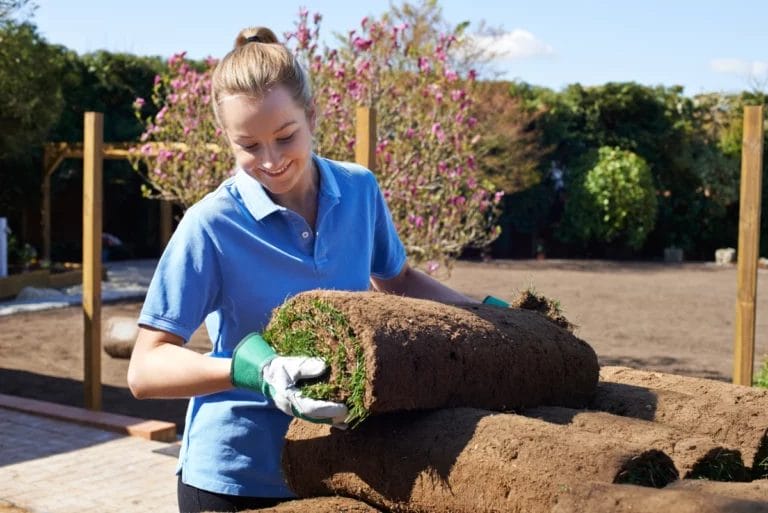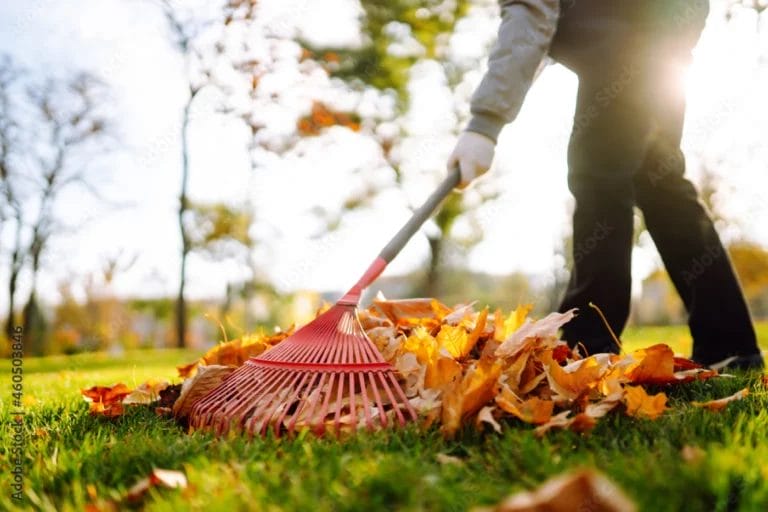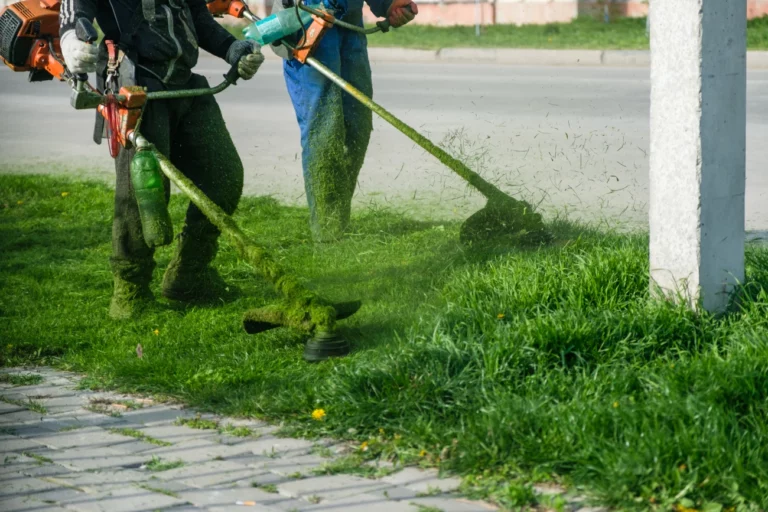Setting thoughtful landscape pricing is the key to growing a profitable business. Charge too little, and you risk cutting into your profits. Charge too much, and potential customers may look elsewhere. So, how do you strike the perfect balance?
What Are the Most Common Landscape Pricing Models?
Choosing the right pricing model ensures you stay strategic while covering all costs. Let’s explore some of the most commonly used methods:
Hourly vs. Project-Based Pricing
An hourly pricing model charges clients based on the time spent on a job, making it ideal for smaller, unpredictable tasks like minor landscaping repairs or one-time maintenance.
For example, if a homeowner needs a quick garden cleanup, an hourly rate ensures fair pricing based on actual labor.
A project-based pricing model offers a flat rate based on estimated time, materials, and labor. This works best for larger projects with clear scopes, such as a full backyard redesign.
For example, if a client requests a patio installation, quoting a project-based price prevents disputes over hours worked.
Cost-Plus Pricing Model
This model calculates the total project cost (materials, labor, and overhead) and adds a set percentage for profit. It ensures profitability while remaining transparent.
For example, if a landscaping job costs $5,000 in materials and labor, adding a 20% markup results in a final price of $6,000.
This approach works well for custom projects where material costs vary, such as installing a pergola or water feature.
Per Square Foot Pricing
Some landscapers charge based on the square footage of the area being worked on. This is common for sod installation, hardscaping, and grading projects, where costs scale with project size.
For example, if installing artificial turf costs $10 per square foot, a 500-square-foot yard would cost $5,000.
Clients appreciate this method because it provides a clear estimate upfront based on space rather than labor hours.
Package and Subscription-Based Pricing
Offering bundled services such as weekly lawn care or seasonal maintenance provides clients with predictable costs and ensures steady revenue.
For example, a $150 monthly subscription for lawn mowing, fertilization, and weed control ensures a steady income while giving homeowners convenience and consistent care.
This model is ideal for businesses offering routine upkeep, and many high-end landscaping companies use it to build long-term client relationships.
What to Consider When Choosing Your Landscape Pricing Model
With different pricing models, it can be challenging to pick the one that will work best for your business. Ask yourself the following questions to evaluate which pricing format best suits your specific needs.
Do You Handle Small, Unpredictable Jobs?
Best fit: Hourly pricing
Advantages:
- Works well for tasks like weeding, minor repairs, or troubleshooting irrigation issues
- Helps cover your time when job durations are uncertain
Potential downside: Clients may hesitate if they don’t know the final cost upfront
Tip: If clients are worried that the final cost will exceed their budget, agree to a maximum price in your contract to mitigate their concern.
Do You Manage Larger Projects With Clear Timelines?
Best fit: Project-based pricing
Advantages:
- Ideal for landscape design, hardscaping, and large planting jobs
- Provides clients with a fixed cost, making budgeting easier
Potential downside: If you underestimate labor or materials, you may cut into profits
Do You Want Consistent Profit Margins on Every Job?
Best fit: Cost-plus pricing
Advantages:
- Simply calculate all costs (materials, labor, overhead) and add a percentage markup
- Ensures profitability and transparency
Potential downside: Pricing can be higher than competitors if your markup is too high
Tip: Research your competitors’ markups to ensure they’re in line with the industry standard. Check out Facebook groups or Reddit forums to learn what other landscapers charge.
Are Your Services Based on Lot Size or Area Covered?
Best fit: Per square foot pricing
Advantages:
- Works well for sod installation, grading, or hardscaping projects
- Helps standardize pricing for different property sizes
Potential downside: Doesn’t always factor in job complexity, which could impact profit
Do You Want Steady Income and Long-term Clients?
Best fit: Package and subscription pricing
Advantages:
- Great for lawn care, seasonal cleanups, and snow removal
- Guarantees recurring revenue and improves customer retention
Potential downside: Requires careful planning to ensure long-term profitability
Tip: Advertise your subscription-based packages on your website and social media channels. Offer a discount for clients who purchase a package of services to foster retention and loyalty.

How to Price Your Landscaping Services
Deciding how much to charge for landscaping is a bit more complex than guessing what customers are willing to pay. A well-structured pricing model ensures your business remains profitable while staying competitive.
Step 1: Calculate Overhead and Profit Margins
Overhead costs include everything your business spends to stay operational, even when you’re not actively working on a project. These expenses typically include:
- Rent or mortgage for an office or storage space
- Landscaping business insurance coverage
- Administrative expenses (software, licenses, and office supplies)
- Landscape marketing costs (website maintenance, advertising, and promotional materials)
Since overhead isn’t tied to specific jobs, you need to distribute these costs across all projects. Many landscapers calculate overhead as a percentage of their total revenue.
For example, if your annual overhead is $50,000 and you expect to generate $200,000 in revenue, your overhead rate would be 25%. Add a markup to your service rates to cover these costs and turn a profit. A common approach is applying a 10-30% markup on top of total costs.
Step 2: Factor in Labor and Material Costs
Labor is one of the most significant expenses in landscaping. When determining how to price landscaping services, calculate how much time a job takes and multiply it by your hourly labor rate. Your labor rate should include:
- Employee wages (or your own pay if you’re a solo landscaper)
- Payroll taxes and benefits (if applicable)
- Workers compensation insurance (if required in your state)
For materials, consider everything from mulch and sod to pavers and lighting fixtures. The price of materials fluctuates, so always confirm current costs before quoting a job. Add your labor and material costs together, then apply your markup to ensure profitability.
Step 3: Set Competitive Rates Based on Market Research
Your pricing should reflect both your costs and what customers are willing to pay. Research competitors in your area to gauge the average pricing for similar services. While you don’t need to match their rates exactly, staying within a reasonable range ensures you remain market-friendly.
You can justify slightly higher prices if you offer higher-quality services, better customer support, or additional value (such as seasonal discounts or package deals). However, avoid underpricing your services just to win jobs — this often hurts long-term profitability.
Step 4: Adjust Prices for Specialized Services
Not all landscaping jobs are the same — some require specialized skills, equipment, or materials that warrant higher pricing.
For specialized services, factor in additional labor, equipment, and skills required before setting your final price. Offering these high-value services at a premium can also help boost overall profitability.
How Much Do Landscapers Typically Charge?
Landscaping costs vary widely based on project size, materials, labor, and location. Below is a general breakdown of what you can expect to pay for common landscaping services:
Lawn maintenance | Routine services like mowing, trimming, and edging generally range from $30 to $65 per hour, depending on yard size and frequency. |
Garden design | A professional garden layout typically costs between $50 and $150 per hour, and pricing is influenced by plant selection, design complexity, and installation requirements. |
Hardscaping | Installing patios, walkways, or retaining walls ranges between $5,000 and $18,000, depending on material choices and project scale. |
Planting trees and shrubs | Adding new plants to a landscape typically costs $50 to $100 per hour, covering labor and materials. |
Note: These are general estimates from multiple sources*. Actual pricing depends on market demand, project specifics, and regional factors. Comparing estimates from multiple landscapers is the best approach for the most accurate quote.
What Factors Influence How to Price Landscaping Jobs?
Several elements impact how to price landscaping jobs accurately. Understanding these factors helps you create a pricing structure that covers expenses and generates a solid profit.
- Labor costs and wages: Often the most significant expense in landscaping, rates vary based on location, skill level, and experience. If you have employees, wages, payroll taxes, and benefits must be factored into your pricing.
- Materials and supplies: Material costs fluctuate based on supplier pricing and project scope. Some materials may need to be purchased in bulk, while others are project-specific.
- Equipment and maintenance: Landscaping equipment (mowers, trimmers, blowers, trucks) require upkeep. These costs should be built into your pricing to ensure profitability.
- Project complexity and size: Simple jobs cost less than intricate landscaping design projects with irrigation, stonework, and planting. Larger, more complex projects require additional labor, time, and materials.
- Location and market demand: Prices vary depending on geographic location and competition. Urban areas typically have higher labor and material costs than rural locations, affecting overall service rates.
- Seasonal pricing variations: Landscaping demand fluctuates throughout the year. Premium pricing is possible in peak seasons like Spring and Summer, while offering discounts in the slower months helps maintain steady revenue.
Tips for Maximizing Landscaping Profitability
Running a profitable landscaping business isn’t just about setting competitive prices — smart business owners focus on increasing revenue, optimizing costs, and building long-term customer relationships. Use these proven strategies to boost your bottom line.
Upsell and Cross-sell Services
Encourage customers to invest in additional services to increase revenue significantly. Some practical ways to upsell include:
- Offering seasonal packages that bundle lawn care, mulching, and fertilization
- Suggesting landscape lighting installations alongside hardscaping projects
- Recommending ongoing maintenance plans for newly designed gardens
Cross-selling is also key. If a customer hires you for lawn maintenance, suggest related services like aeration or irrigation system installation to enhance their landscape’s health.
Reduce Costs Without Sacrificing Quality
Cutting costs shouldn’t mean cutting corners. Instead, focus on:
- Buying materials in bulk: Purchasing mulch, plants, and pavers wholesale reduces per-unit costs
- Maintaining equipment properly: Regular servicing prevents costly breakdowns and extends machinery lifespan
- Using digital tools: Landscaping software helps track expenses, manage inventory, and optimize budgeting
Finding the right balance between affordability and quality ensures customers remain satisfied while your profit margins stay healthy.
Improve Efficiency With Better Scheduling and Equipment
Time is money, and inefficiencies can quickly eat into your profits. Improve productivity by:
- Optimizing routes: Plan daily schedules strategically to minimize travel time between job sites
- Investing in high-quality equipment: Reliable tools reduce downtime and speed up project completion
- Leveraging automation: Use scheduling apps and invoicing software to streamline administrative tasks
Maximizing efficiency allows your team to complete more jobs in less time — boosting revenue without adding labor costs.
Build Customer Loyalty With Value-added Services
Repeat customers are the foundation of a successful landscaping business. Strengthen client relationships by offering:
- Free seasonal lawn health assessments to identify future service needs
- Referral discounts for customers who bring in new business
- Educational resources such as care tips or seasonal maintenance guides
When customers feel valued, they’re more likely to return for future projects and recommend your services to others.
Save Money With a Landscaping Insurance Plan
Unexpected expenses like equipment damage or liability claims can quickly drain profits. The right landscaping insurance policy protects your business by covering the following:
- Property damage: Accidents happen, and if a project damages a client’s property, general liability insurance is designed to cover repair costs
- Bodily injury claims: If a third party gets injured on a job site, liability coverage helps prevent out-of-pocket expenses
- Equipment protection: Insuring essential tools and machinery with trailer and equipment coverage ensures theft or damage won’t halt your operations
Investing in a cost-effective insurance plan tailored to landscapers’ unique needs ensures financial stability and peace of mind. Check out our comprehensive guide to learn more details about landscaping insurance.
Questions About How Much to Charge for Landscaping
How do I handle pricing for unexpected project changes?
If the project scope changes, discuss additional costs with the client upfront and provide a revised quote before proceeding. Consider adding a clause in your client contracts that allows for price adjustments due to unexpected project changes.
How does business insurance impact landscaping pricing?
Your insurance premium costs should be factored into pricing to cover liability, workers compensation, and equipment protection. Failing to account for these expenses can cut into your profits and leave you financially vulnerable in case of accidents or damages.
How much does landscaping business insurance typically cost?
The lowest price for landscaping insurance starts at $31 per month. Costs vary based on your specific coverage needs and business size.
Secure Your Profits and Your Business — Get Covered Today!
Pricing landscaping jobs correctly ensures your business remains profitable. However, profitability loses meaning without adequate protection. A single accident or equipment theft could put your earnings at risk.
Landscaping insurance safeguards your business from financial setbacks, covering liability, property damage, and equipment protection. Get a quote today and keep your business secure.






